From Voodoo to GeForce: The Awesome History of 3D Graphics
Nvidia NV3
The first of Nvidia's GPUs to target the "performance segment of the volume PC graphics market," the N3, or Riva 128, was designed with Microsoft's DirectX 5 API in mind. Nvidia packed 3.5 million transistors on its first performance part, along with a single pixel pipeline.
Modern for its time, the Riva 128 came configured with 4MB of memory, a 100MHz core clockspeed, 1.6GB/s of bandwidth, a 206MHz RAMDAC, compatible with AGP 2X. It was also a 2D/3D combo card, whereas 3dfx's Voodoo line still required a separate 2D card, a costly proposition not all gamers were keen on. However, image quality was poor compared to the Voodoo line, at least early on, and some games at the time were embracing 3dfx's proprietary Glide API.

Model: Riva 128
Date Released: 1997
Interface: AGP/PCI
Shader Model: N/A
DirectX: 5
Manufacturing Process: 0.35 micron
Core Clockspeed: 100MHz
Memory Clockspeed: 100MHz
Memory Bus: 128-bit
Transistors: 3.5 million
ATI Rage Pro
The next iteration of the Rage came in 1997. ATI claimed it had been working closely with both Intel and Microsoft in developing the new part, leading to the first videocard to support AGP 2X (133MHz) mode. This gave the card a peak bandwidth in excess of 500MB/s, or twice the throughput of AGP 1X.
Everything about the Pro was improved compared to its predecessor. It came with an integrated floating-point set-up engine that could process up to 1.2 million triangles per second, improved DVD playback, and support for resolutions up to 1600x1200.
PC Gamer Newsletter
Sign up to get the best content of the week, and great gaming deals, as picked by the editors.
Fun Fact: Following disappointing sales, ATI added the word 'Turbo' to the card's moniker and released new drivers that were supposed to increase performance. In reality, the drivers only helped when benchmarking.
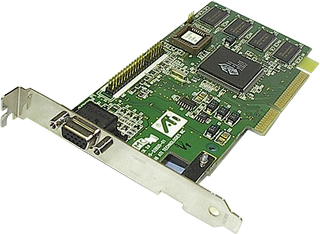
(Image Credit: recycledgoods.com)
Rendition Verite 2000
Rendition's second and third attempts at a competitive GPU solution materialized in the form of the Verite 2100 and 2200, both of which shared the exact same architecture with one another and differed only in clockspeed. Both boards boasted a 4MB frame buffer, bilinear and trilinear filtering, support for texture animation, a complete on-chip triangle setup and a triangle engine capable of rendering triangles asynchronously, somewhat improved (but still lackluster) 2D performance, and hardware accelerated DVD playback.
Despite plans to continue producing 3D cards, the Verite 2000 was the last of the line for Rendition before the company was acquired by Micron.
Fun Fact : Had the company not been sold, Rendition would have released the Verite 3300. But delays and other setbacks caused left Micron uninterested in contnuing its development, and the project was ultimately scrapped.
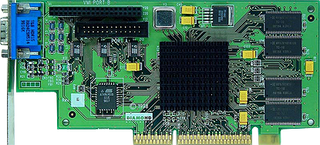
(Image Credit: Palcalova Sbirka)
Model: Verite 2100
Date Released: 1997
Interface: AGP/PCI
Shader Model: N/A
DirectX: 5
Manufacturing Process: 0.35 micron
Core Clockspeed: 50MHz
Memory Clockspeed: 100MHz
Memory Bus: 64- bit

(Image Credit: ixbt.com)
Model: Verite 2200
Date Released: 1997
Interface: AGP/PCI
Shader Model: N/A
DirectX: 5
Manufacturing Process: 0.35 micron
Core Clockspeed: 60MHz
Memory Clockspeed: 120MHz
Memory Bus: 64-bit
3dfx Rush
As good as the Voodoo1 was at the time, 3dfx found out not everyone was willing to invest in a two-card solution for 2D and 3D graphics. To remedy the Voodoo1's shortcoming, 3dfx released the Voodoo Rush in 1997, which added a 2D chip to the original graphics board, either as an integrated chip or a daughtercard. Gamers no longer had to fiddle with daisy-chaining multiple videocards, but at the expense of performance. A kludgy solution at best, some estimates put the 3D performance hit at up to 20 percent, a direct result of sharing bandwidth between chips. Making matters worse, the Rush suffered from poor 2D performance and instability, making it one of the few unforgettable cards in 3dfx's storied history.

(Image Credit: Rage3d forum pahncrd)
Model: Voodoo Rush
Date Released: 1997
Interface: AGP/PCI
Shader Model: N/A
DirectX: 3
Manufacturing Process: 0.5 micron
Core Clockspeed: 50MHz
Memory Clockspeed: 50MHz
Memory Bus: 64-bit
Transistors: 1 million
S3 Savage 3D
Following the hype machine that was the ViRGE, which played on the popular Virtual Reality nomenclature of the time, S3 refocused its effort on the hardware, and the result was the Savage 3D released in 1998. It was the first 0.25 micron-based GPU ever released, as well as the first to use texture compression. Other standout features include single-cycle trilinear-filtering, AGP 2X support, and up to a 125 million pixel/s fill rate.
But one thing the Savage 3D had in common with the ViRGE was that it was doomed for failure. While the hardware was up to par for its time, the driver support was not and it was only after the Savage 3D aged into a budget card that driver releases seemed to improve. Poor quality boards also proved problematic, resulting in low yields, and sub- standard SDRAM chips limited the chipset's clockspeed. Barely a year on the market, S3 was ready to forget all about the Savage 3D and put the GPU out to pasture.
Fun Fact: The last official drive update for the Savage 3D was posted in 2007, though the modding community has continued to support the card with most recently release (2007) showing support for Vista.

(Image Credit:freewebs.com)
Savage 3D: No shader model, DX6 support, 0.25 micron, PCI/AGP, 90MHz core, 128-bit
Model: Savage 3D
Date Released: 1998
Interface: AGP/PCI
Shader Model: N/A
DirectX: 6
Manufacturing Process: 0.25 micron
Core Clockspeed: 100MHz
Memory Clockspeed: 120MHz
Memory Bus: 64-bit
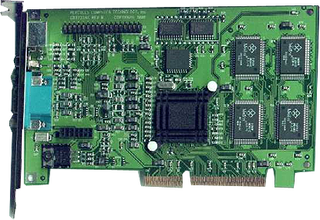
(Image Credit: hothardware.com)
Model: Savage 3D Supercharged
Date Released: 1998
Interface: AGP/PCI
Shader Model: N/A
DirectX: 6
Manufacturing Process: 0.25 micron
Core Clockspeed: 120MHz
Memory Clockspeed: 120MHz
Memory Bus: 64-bit
Matrox G100/G200
Canadian-based Matrox first got start producing graphic solutions in 1978, but really became a major force in the 1990s. Barely a blip on the radar, the company's G100 chipset was quickly replaced by the G200, the first generation of Matrox cards to be truly considered a gaming solution.
In addition to fast 2D performance, the G200 delivered 3D acceleration through a variety of videocards, most notably the Millennium and Mystique. All G200 cards were built on a 0.35-micron manufacturing process, came with a 85MHz reference clockspeed, and a 64-bit bus. In addition, the G200 offered full hardware accelerated DVD and MPEG1/2 playback, up 16MB of onboard memory, and TV-Out. But perhaps its most notable feature was what Matrox called the 'DualBus.' The G200 consisted of a 128-bit core with dual unidirectional 64-bit buses, allowing for lower latencies.
As a gaming solution, the G200 offered competitive 3D performance, if not somewhat slower than its rivals, but this was offset by the G200's superb image quality. However, poor OpenGL performance and, at least early on, buggy driver support held the G200 back from its potential.
Fun Fact: Ever wish you could upgrade your videocard's memory? With the Mystique, you could, thanks to a handy SODIMM slot integrated right on the card!
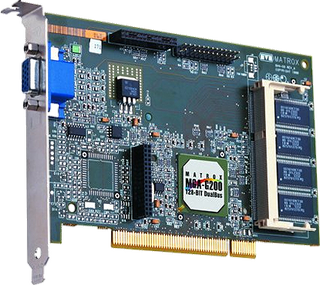
(Image Credit: Dell)
Model: Millennium G 200
Date Released: 1998
Interface: AGP
Shader Model: N/A
DirectX: 6
Manufacturing Process: 0.35 micron
Core Clockspeed: 85MHz
Memory Clockspeed: 112MHz
Memory Bus: 64-bit
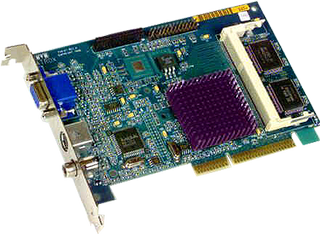
(Image Credit: duiops.net)
Model: Mystique G 200
Date Released: 1998
Interface: AGP
Shader Model: N/A
DirectX: 6
Manufacturing Process: 0.35 micron
Core Clockspeed: 85MHz
Memory Clockspeed: 112MHz
Memory Bus: 64-bit
Matrox G220/G250
In 1997, Matrox increased the Mystique's RAMDAC from 200MHz to 220MHz, resulting in the G220. No other changes were made that would separate the new card from the old. For the G250, Matrox switched to a 0.25-micron manufacturing process, a move which allowed the company to increase production. The G250 sipped less power than its predecessor, ran cooler, and was primarily sold to OEMs.
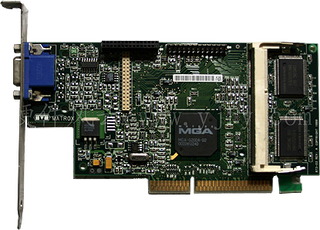
(Image Credit: yjfy.com)
Model: G 250
Date Released: 1998
Interface: AGP
Shader Model: N/A
DirectX: 6
Manufacturing Process: 0.25 micron
Core Clockspeed: 85MHz
Memory Clockspeed: 112MHz
Memory Bus: 64-bit
Intel i740 and GMA
You're no doubt familiar with Intel's integrated GMA graphics that litter the low-cost landscape today, but did you know Intel also came out with a discrete 3D graphics chip? The year was 1998 and Intel had grand plans of competing in the 3D market, starting with the i740. Part of the reasoning behind the release was to help promote the AGP interface, and it was widely believed that Intel's financial status and manufacturing muscle would give the chip maker a substantial edge in competing with Nvidia and ATI.
Instead, poor sales and an underperforming product led Intel to abandon the discrete graphics market less than 18 months after it had entered, which also meant the i752 and i754 -- two followup GPUs -- would never see the light of day. And ten years after its launch, at least one site would look back at the i740 as one of "The Most Disappointing Graphics Chips in the Last Decade."
The original i740 design lives on, however, as it provided the basis for the much longer lasting GMA line, which still exists today. Moreover, Intel has on more than one occasion showed interest in re-entering the discrete graphics market, and its Larrabee architecture could see the light of day as early as this year.
Fun Fact: Sales of the i740 were so bad that some accused Intel of anticompetitive practices for allegedly seling its 740 graphics chips below cost to overseas videocard vendors in order to boost its market share.
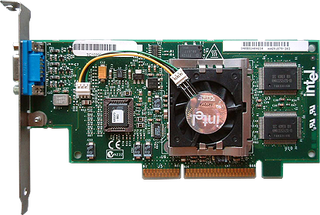
Model: i740
Date Released: 1998
Interface: AGP/PCI
Shader Model: N/A
DirectX: 6
Manufacturing Process: ?
Core Clockspeed: 55MHz
Memory Clockspeed: 100MHz
Memory Bus: 64-bit
Transistors: 3.5 million
Next, 3dfx dominates 3D graphics with SLI
Paul has been playing PC games and raking his knuckles on computer hardware since the Commodore 64. He does not have any tattoos, but thinks it would be cool to get one that reads LOAD"*",8,1. In his off time, he rides motorcycles and wrestles alligators (only one of those is true).
Most Popular


